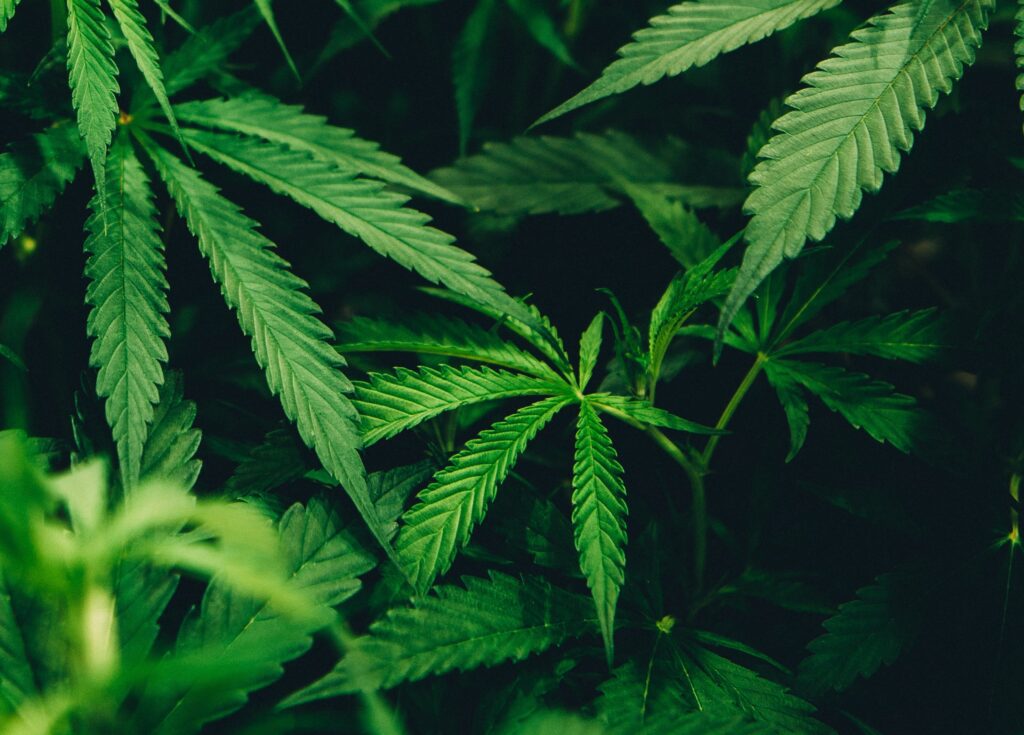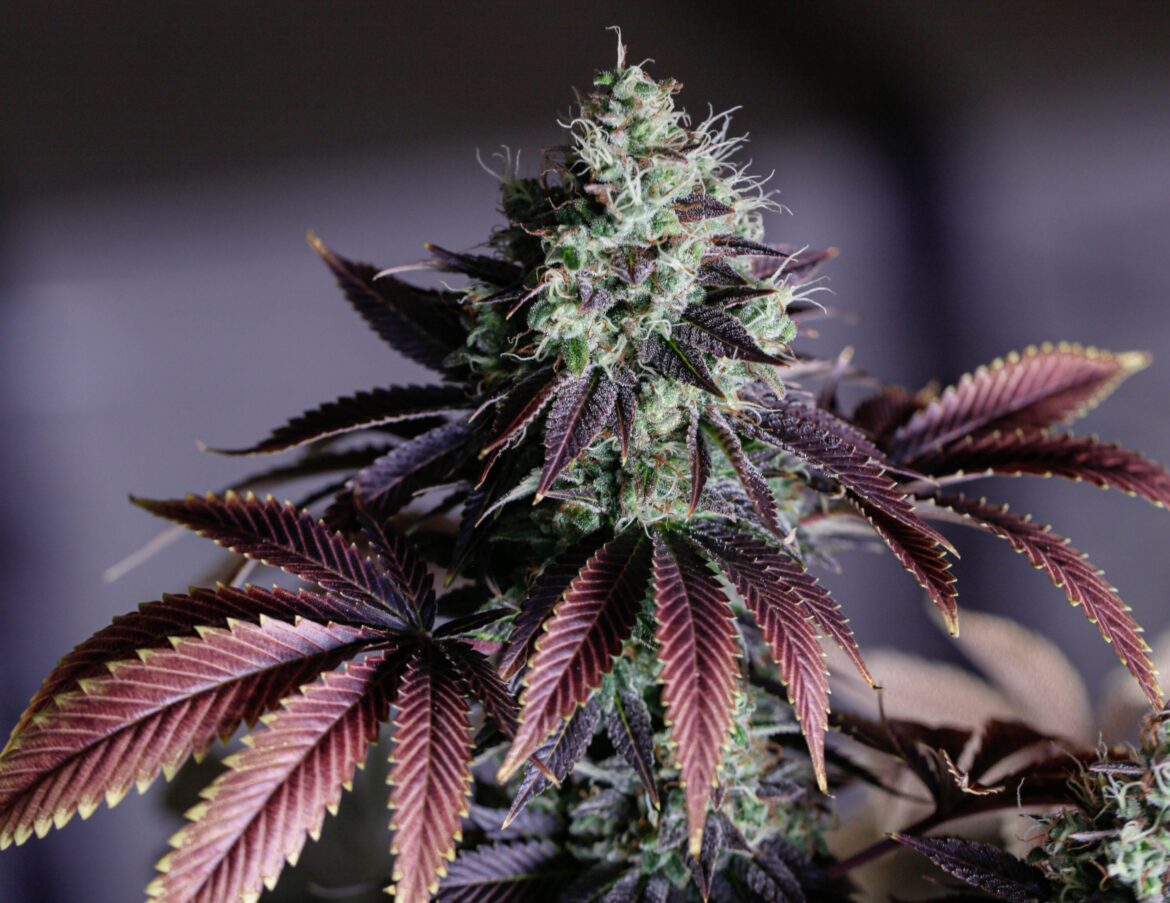You could probably pick your favorite strain out of a lineup. You know the color, aroma, and flavor profile like you know the back of your hand. Blue Dream is one of those strains for many people. It’s iconic, highly recognizable, and well-loved for its elevating effects.
These pretty flowers, covered in the white frost of their trichomes and dainty peach hairs, are beloved by people who want a body high without couch lock and a head high without anxiety. It’s beautifully balanced and positively delicious. Blue Dream likely fits the bill if you want a well-rounded strain to keep on standby.
Where did Blue Dream come from?
Almost every strain has had two parents who worked together to create the beautiful child you enjoy. Those strains also have their own parents. It’s a vast and complex family tree of weed that breeders and growers have worked to perfect for many years.
Blue Dream’s parents are Blueberry, an indica, and Haze, a sativa. Blueberry is a combination of Purple Thai and Thai. Haze is Mexican Sativa and a Columbian landrace strain. All of these strains passed down their genetics, eventually being combined into Blue Dream.
Blue Dream is a sativa-leaning hybrid, but it’s well-balanced. Blueberry leans moderately indica, and Haze leans strongly sativa. That’s why breeding the two pulls more in a sativa direction. This doesn’t mean its indica effects go unnoticed. Everything is present in a unique balance that Blue Dream loyalists love.
What does Blue Dream taste and smell like?
Your nose knows what kinds of strains it likes. Weed gets its flavor and aroma from terpenes, aromatic compounds that naturally occur within a plant. These compounds lead us to recognize flowers, fruits, and vegetables by scent alone. You can tell when someone just squeezed lemon in the kitchen, and you know the lavender smell of a spa.
Blue Dream’s terpene profile is myrcene, pinene, limonene, beta-caryophyllene, and just a touch of linalool. Myrcene is spicy, funky, and fruity. It’s found in abundance in mangoes. Pinene is the terpene that gives pine trees their woody, crisp smell. Limonene is the terpene dominant in citrus fruit. Beta-caryophyllene is the spicy warm note in cinnamon and basil, and linalool is synonymous with lavender.
These terpenes combine to create a profile that mimics warm and juicy berries with a touch of woodiness and a slight floral kick.
What are the effects of Blue Dream?
The terpenes and cannabinoids of a strain work together to produce its effects. Terpenes are similar to aromatherapy. You know that smelling the linalool in lavender relaxes and soothes you. Smelling it or inhaling it from your weed produces the same effect. The smell of freshly zested lemons is bright and energizing due to the limonene, and it extends the same impact to your weed.
Blue Dream is much higher in THC than it is in CBD. This means it will stimulate you more than relax you based on its cannabinoids. With a terpene balance that favors relaxation, the edge is taken off that stimulation. This is what makes Blue Dream a mellow experience. You’re uplifted by the THC and limonene, but the soothing terpenes round out the effects.
Blue Dream as a daytime strain
Many people prefer to use Blue Dream as a daytime strain because it’s slightly too energizing for nighttime use and not so sedating that it keeps you stuck to one chair. If you need to stay mellow and productive, Blue Dream is an even-keeled ride that will give you the boost you’re looking for without the sleepy side effects.
Some people find that Blue Dream makes them feel too happy and spacy to be highly productive. This can be mitigated by using a minimal amount of Blue Dream or reserving it for productive tasks that are also creative. You’ll find a little bit of inspiration in the well when you’re pondering.
If you’re prone to existential rabbit holes and smoking leads you to question the subtle nuances of humanity, and why nobody has invented cat shoes, you should probably be careful with all sativa strains. They tend to affect people who lean cerebral while they’re high.

Blue Dream for pain management
The terpenes in Blue Dream are the same in strains that most people use for pain relief. Medical cannabis patients love Blue Dream because small doses take the edge off uncomfortable aches without sending them straight into an impromptu nap. Some people who use Blue Dream medically find that they prefer its effects over a more potent pharmacological pain killer, reporting that it leaves them with more of the mental clarity they need to be productive.
People who tend to lean more recreational than medical in their cannabis use gravitate towards Blue Dream’s effects to help with everyday aches and pains they experience in their day to day lives. Many people shout out Blue Dream for its ability to ease things like period cramps and muscle soreness after a workout.
That’s how Blue Dream developed a reputation as being the aspirin of pot. Got a headache? Sore feet from working all day? Put a little Blue Dream on it, have a nice cup of coffee and a sandwich, and chill out for a while. You’ll feel better.
Blue Dream has a cult following
Blue Dream is one of those strains whose fans will follow it around the country like the Grateful Dead. It’s one of the best-selling strains, if not the absolute best-selling strain, in most states where recreational weed is legalized.
It’s worth noting that, like many things like a cult following, Blue Dream can be somewhat divisive. You have people who will never get enough Led Zeppelin or watch every single rerun of Friends on an endless loop. On the other side of that same coin, you have people who are quick to say, “you’ve got to be kidding me, not that again.”
If you’re hesitant to try Blue Dream because you feel like it’s been overhyped, the answer is complex. Yes, maybe it’s been a bit talked up. But no, that doesn’t make it any less fantastic. If you’ve never tried it, you won’t be able to make that assessment for yourself.
Is all Blue Dream the same?
Every grower’s version of a strain will be a little different most of the time. Some strains are proprietary, which means they’re solely controlled by the person who created them, who constantly maintains oversight. Blue Dream isn’t. Everyone can grow Blue Dream, which leaves a little bit of room for interpretation.
Some Blue Dream will be higher or lower in THC. There’s Blue Dream CBD and Blue Dream delta 8. There’s always going to be some wiggle room.
For the most part, all Blue Dream should be close enough to the same that it will produce the same effects. Besides varying THC levels, you’re unlikely to notice any significant inconsistencies or disparities between different offerings.
If you aren’t sure, check the reviews. One of the most beautiful things about socially and legally acceptable cannabis culture is that people who regularly use cannabis have fewer reservations about admitting their use in a review or candidly discussing their favorite strains.
A Blue Dream enthusiast will quickly point out if a particular grower’s iteration doesn’t live up to their expectations.
The takeaway
Blue Dream is highly enjoyable for many people, while the rest find it generally agreeable. If you’re interested in Blue Dream or the benefits its users say it imparts, give it a shot. You don’t have to commit to half an ounce of the stuff. Pick up a pre-roll to give it a test run. If it’s not your favorite, you’re not saddled with a bunch of weed you aren’t crazy about.
Emjay has all the Blue Dream you could ever want, no matter the form you prefer it in. Pick what you want, order it, and in as little as half an hour, you’ll have the weed of your dreams. Get it? See what we did there?
